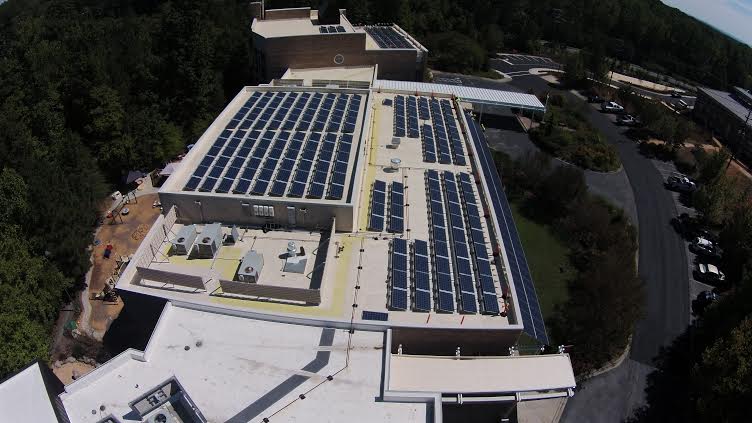On November 6, the latest photovoltaic array on a North Carolina house of worship went online. The 84.76 kW, 326-panel system will generate 60% of the annual electricity needs at United Church of Chapel Hill (UCCH) and reduce the church’s overall carbon footprint by a minimum of 44% next year and for years to come. The project was funded as part of a congregation-wide, multi-purpose capital campaign using a “donation model” with the option for individual donors to receive North Carolina state tax credits for the portion of the campaign devoted to the solar project.
UCCH’s solar journey began in 2011 when a subcommittee of United Earth Ministries (UEM) formed to explore significant energy saving and renewable energy options for the church. UEM is a committee of the Board of Justice, Outreach and Service, housed within this board because of the intersection of care of God’s creation, and both social and intergenerational justice. Prior to the solar project, UEM had laid groundwork with the congregation by sponsoring education and devotional programs for adults and youth, and by working with the building and grounds volunteers and staff toward sustainability by going after the “low hanging fruit” of energy efficiency. By 2011, with the science of climate change strengthening, UEM began to think beyond energy efficiency, and began fact-finding and brainstorming about renewable energy sources and financing.
After many months of research and discussion UEM realized that a “return on investment” (ROI) calculus was the wrong metric to prioritize and that care of God’s creation is part of their congregation’s call to faith and mission. As a congregation, UCCH’s decisions on mission work has always been based on what is right to do. Once the church discerns what is right, they figure out how to fund the mission. UEM realized they needed to think of the solar project in the same way. UEM proposed a large-scale project that would reduce the church’s carbon footprint substantially and act as a “billboard for care of God’s creation” and hopefully as an inspiration for other churches, synagogues, mosques, and temples in the state. Read details of how the congregations embraced the project whole-heartedly along with facts about the UCCH project.
UCCH’s beautiful solar array includes a highly visible portion of 76 panels on a trellis that spans more than 120 feet across the front of the church. It is a daily reminder to all who enter the building of the congregation’s commitment to sustainability and future generations. UEM hopes that this work will “go viral” and many other congregations will commit to help our world transition to truly clean, renewable and sustainable energy, honoring God and preserving the world for future generations.
May it be so!

